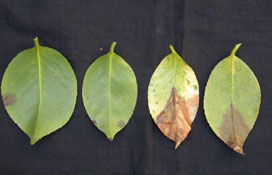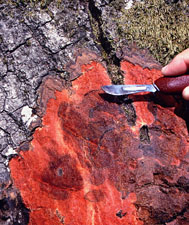Once you reviewed the hosts and symptoms to determine that Phytophthora ramorum is a probable cause of what you’ve observed, the final step in getting a confirmed diagnosis is to submit the symptomatic plant material to a laboratory for a series of tests. In California, local contacts can further assist with determining whether to collect a sample and where to bring it for analysis. Outside of California, contact local agricultural or Extension staff about how to proceed.
Guidelines and tips for taking your own sample
- Sudden oak death and associated diseases caused by Phytophthora ramorum: The guide is for field and laboratory diagnostic use. In addition to pictures and descriptions of symptoms on numerous hosts, it includes culture and PCR isolation instructions as well as culture description and storage tips
- Diagnosis and Monitoring of Sudden Oak Death. University of California Cooperative Extension. Pest Alert 6. This guide is a good reference for use when conducting field identification and sampling. It includes sections on appropriate sampling procedures, disposal and cleanup to prevent further spread, and a section on look-alike conditions
- Diagnosis and Monitoring of Sudden Oak Death: Guidelines to follow for both foliar and bark material. More details can be found in
 Foliar Sampling
Foliar Sampling
Collect 10 or more symptomatic leaves in various stages of symptom development. Place the dry sample in a plastic bag and keep cool, away from direct sunlight. Bring the sample to the County Contacts at your local Agricultural Commissioner’s or UC Cooperative Extension office within 24 hours.
Bark Sampling
While bark sampling is the only way to directly confirm disease on an infected oak, this procedure is invasive and requires particular equipment from the laboratory; only professionals who have attended a training session should undertake this sampling. Contact a trained arborist or your County Contacts for assistance with bark sampling of oaks.



Do you know of any labs that will test the samples?